Research on Optimum Multi-hop Relay of Wireless Ultraviolet Communication in Military Vehicle Secret Formation
-
摘要: 无线紫外光通信成为强电磁干扰下的有效通信手段,满足复杂战场环境下车队执行战略物资运输和弹车队隐蔽行驶时车辆间保持可靠隐秘通信的需求。在行驶中每辆车自身作为其它车辆的中继,通过多跳方式为非视线内车辆之间建立稳定可靠的通信链路。因此,基于紫外光单次散射模型,该文研究了最优多跳中继问题,理论分析了收发仰角与频谱效率的关系,依据使频谱效率最大化原则,得出最优跳数近似表达式。仿真结果表明,不同距离移位范围和不同收发仰角都对应特定的最优跳数值,与最优能量计算方法相比,最大频谱效率计算方法在小功率传输时有更好的传输能力,并且达到节约功率的需求。紫外光长距离通信时,系统性能并不随着协作中继数的增加而提高,选取合适的中继数及小发射仰角和大接收仰角的结构配置,系统可获得较高的传输能力。Abstract: Wireless ultraviolet communication becomes an effective means of communication under strong electromagnetic interference, which meets the need of reliable and secret communication between vehicles when the fleet performs strategic material transportation and the missile vehicle fleet of concealed driving vehicles in a complex battlefield environment. Each vehicle acts as a relay for other vehicles while driving, and establishes a stable and reliable communication link between non-line-of-sight vehicles through a multi-hop model. Therefore, based on the single-scattering model of ultraviolet, the optimal multi-hop relay problem is studied, and the relationship between the elevation angle of the transmitting and receiving and the spectral efficiency is theoretically analyzed. According to the principle of maximizing the spectral efficiency, the approximate expression of the optimum number of hops is obtained. The simulation results show that the optimum number of hops correspond to different distance shift range and elevation angles. Compared with the optimum energy calculation method, the proposed method has better transmission capability in low power transmission and achieves the requirement of power saving. In the long-distance ultraviolet communication, system performance does not increase with the number of cooperative relays. The system can obtain a higher transmission capacity by selecting a suitable number of relays and a small transmission elevation angle and a large receiving elevation angle.
-
表 1 系统主要仿真参数
参数 数值 紫外波长 260 nm PMT探测效率 0.3 滤光片透过率 0.6 吸收系数 0.802×10–3 m–1 米氏散射系数 0.284×10–3 m–1 瑞利散射系数 0.266×10–3 m–1 普朗克常数h 6.6×10–34 -
WU Menglong, HAN Dahai, ZHANG Xiang, et al. Experimental research and comparison of LDPC and RS channel coding in ultraviolet communication systems[J]. Optics Express, 2014, 22(5): 5422–5430. doi: 10.1364/OE.22.005422 XU Changming, ZHANG Hongming, and CHENG Julian. Effects of haze particles and fog droplets on NLOS ultraviolet communication channels[J]. Optics Express, 2015, 23(18): 23259–23269. doi: 10.1364/OE.23.023259 ZHAO Taifei, GAO Yingying, and ZHANG Ying. An area coverage algorithm for non-line-of-sight ultraviolet communication network[J]. Photonic Network Communications, 2016, 32(2): 269–280. doi: 10.1007/s11107-016-0622-7 YUAN Renzhi and MA Jianshe. Review of ultraviolet non-line-of-sight communication[J]. China Communications, 2016, 13(6): 63–75. doi: 10.1109/CC.2016.7513203 张曦文, 赵尚弘, 李勇军, 等. 基于空分复用的多信道机间紫外光通信定向MAC协议[J]. 激光技术, 2016, 40(3): 451–455. doi: 10.7510/jgjs.issn.1001-3806.2016.03.032ZHANG Xiwen, ZHAO Shanghong, LI Yongjun, et al. Multi-channel directional media access control protocol for airborne ultraviolet communication based on space division multiplexing[J]. Laser Technology, 2016, 40(3): 451–455. doi: 10.7510/jgjs.issn.1001-3806.2016.03.032 HE Qunfeng, XU Zhengyuan, and BRIAN S. Non-line-of-sight serial relayed link for optical wireless communications[C]. MILCOM 2010 Military Communications Conference, San Jose, USA, 2010: 1588–1593. doi: 10.1109/MILCOM.2010.5680180. VAVOULAS A, SANDALIDIS H G, and VAROUTAS D. Node isolation probability for serial ultraviolet UV-C multi-hop networks[J]. Journal of Optical Communications and Networking, 2011, 3(9): 750–757. doi: 10.1364/JOCN.3.000750 李济波, 吴晓军, 王红星, 等. 紫外光非直视通信抗干扰中继链路方法及其功率需求分析[J]. 激光与光电子学进展, 2015, 52(3): 030601. doi: 10.3788/LOP52.030601LI Jibo, WU Xiaojun, WANG Hongxing, et al. Anti-interference relayed link method and power requirement analysis for ultraviolet non-line-of-sight communication[J]. Laser &Optoelectronics Progress, 2015, 52(3): 030601. doi: 10.3788/LOP52.030601 ARDAKANI M H, HEIDARPOUR A R, and UYSAL M. Performance analysis of relay-assisted NLOS ultraviolet communications over turbulence channels[J]. Journal of Optical Communications and Networking, 2017, 9(1): 109–118. doi: 10.1364/JOCN.9.000109 柯熙政, 陈锦妮. 紫外光无线传感器网络节能的研究与仿真[J]. 激光技术, 2013, 37(2): 251–255. doi: 10.7510/jgjs.issn.1001-3806.2013.02.028KE Xizheng and CHEN Jinni. Research of energy-saving wireless sensor network based on UV light[J]. Laser Technology, 2013, 37(2): 251–255. doi: 10.7510/jgjs.issn.1001-3806.2013.02.028 何华, 柯熙政, 赵太飞. 紫外光非视距单次散射链路模型的研究[J]. 光学学报, 2010, 30(11): 3148–3152. doi: 10.3788/AOS20103011.3148HE Hua, KE Xizheng, and ZHAO Taifei. Research of ultraviolet non-line-of-sight single scattering link model[J]. Acta Optica Sinica, 2010, 30(11): 3148–3152. doi: 10.3788/AOS20103011.3148 赵太飞, 金丹, 宋鹏. 无线紫外光非直视通信信道容量估算与分析[J]. 中国激光, 2015, 42(6): 0605001. doi: 10.3788/CJL201542.0605001ZHAO Taifei, JIN Dan, and SONG Peng. Channel capacity estimation and analysis of wireless ultraviolet non-line-of-sight communication[J]. Chinese Journal of Lasers, 2015, 42(6): 0605001. doi: 10.3788/CJL201542.0605001 CHEN Gang, XU Zhengyuan, DING Haipeng, et al. Path loss modeling and performance trade-off study for short-range non-line-of-sight ultraviolet communications[J]. Optics Express, 2009, 17(5): 3929–3940. doi: 10.1364/OE.17.003929 FENG Hao and CIMINI L J. On the optimum number of hops in a multi-hop linear network with randomly located nodes[C]. 2012 IEEE International Conference on Communications, Ottawa, Canada, 2012: 2329–2333. doi: 10.1109/ICC.2012.6363752. CHEN Deqiang, HAENGGI M, and LANEMAN J N. Distributed spectrum-efficient routing algorithms in wireless networks[C]. The 41st Annual Conference on Information Sciences and Systems, Baltimore, USA, 2007: 5297–5305. doi: 10.1109/CISS.2007.4298387. CORLESS R M, GONNET G H, HARE D E G, et al. On the lambert W function[J]. Advances in Computational Mathematics, 1996, 5(1): 329–359. doi: 10.1007/BF02124750 朱秉诚. 自由空间光通信中继系统研究[D]. [博士学位论文], 东南大学, 2015: 19–22.ZHU Bingcheng. Free-space optical communications with relays[D]. [Ph.D. dissertation], Southeast University, 2015: 19–22. 王智. 部队车队行驶的注意事项[J]. 汽车运用, 2007(1): 34. doi: 10.3969/j.issn.1002-8374.2007.01.028WANG Zhi. Precautions for troop convoy driving[J]. Auto Application, 2007(1): 34. doi: 10.3969/j.issn.1002-8374.2007.01.028 -





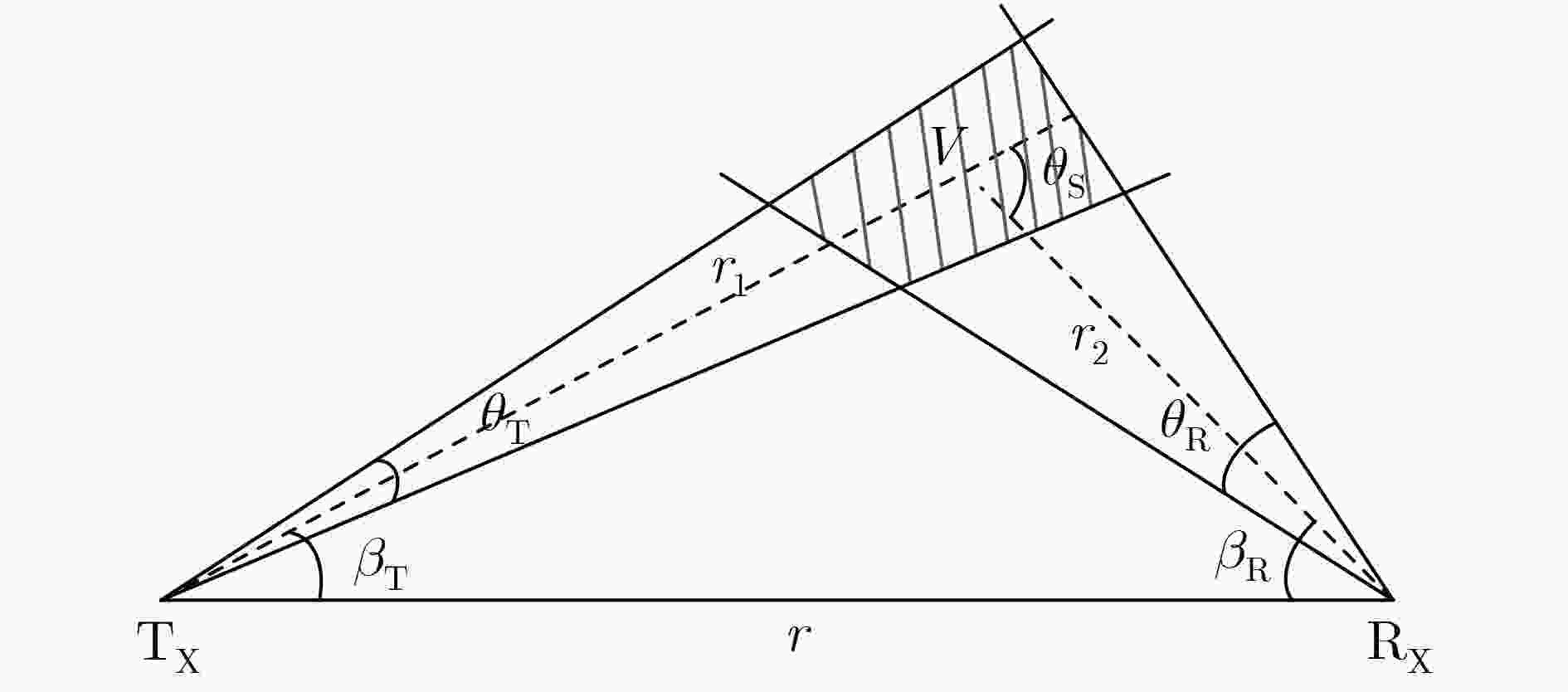
 下载:
下载:

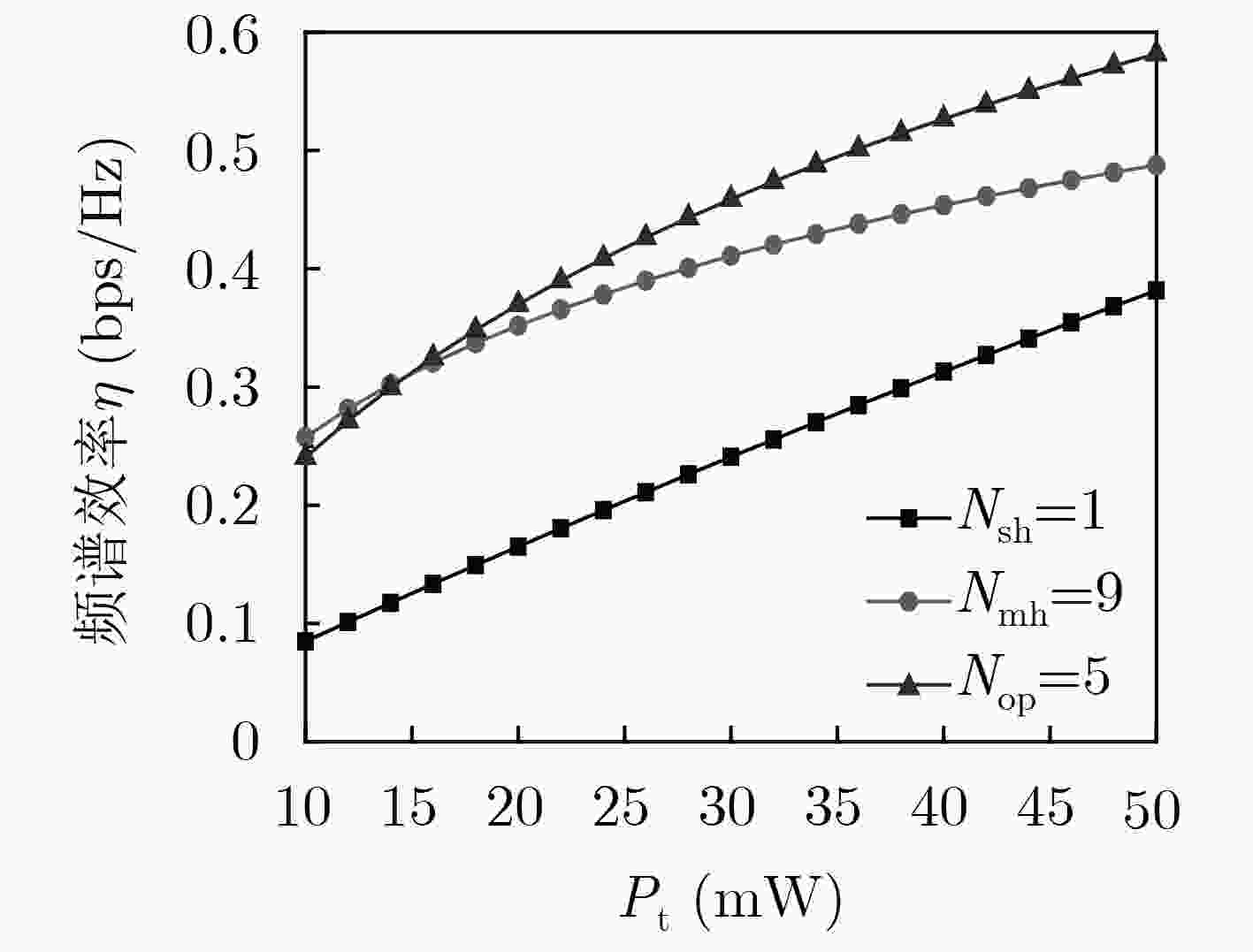
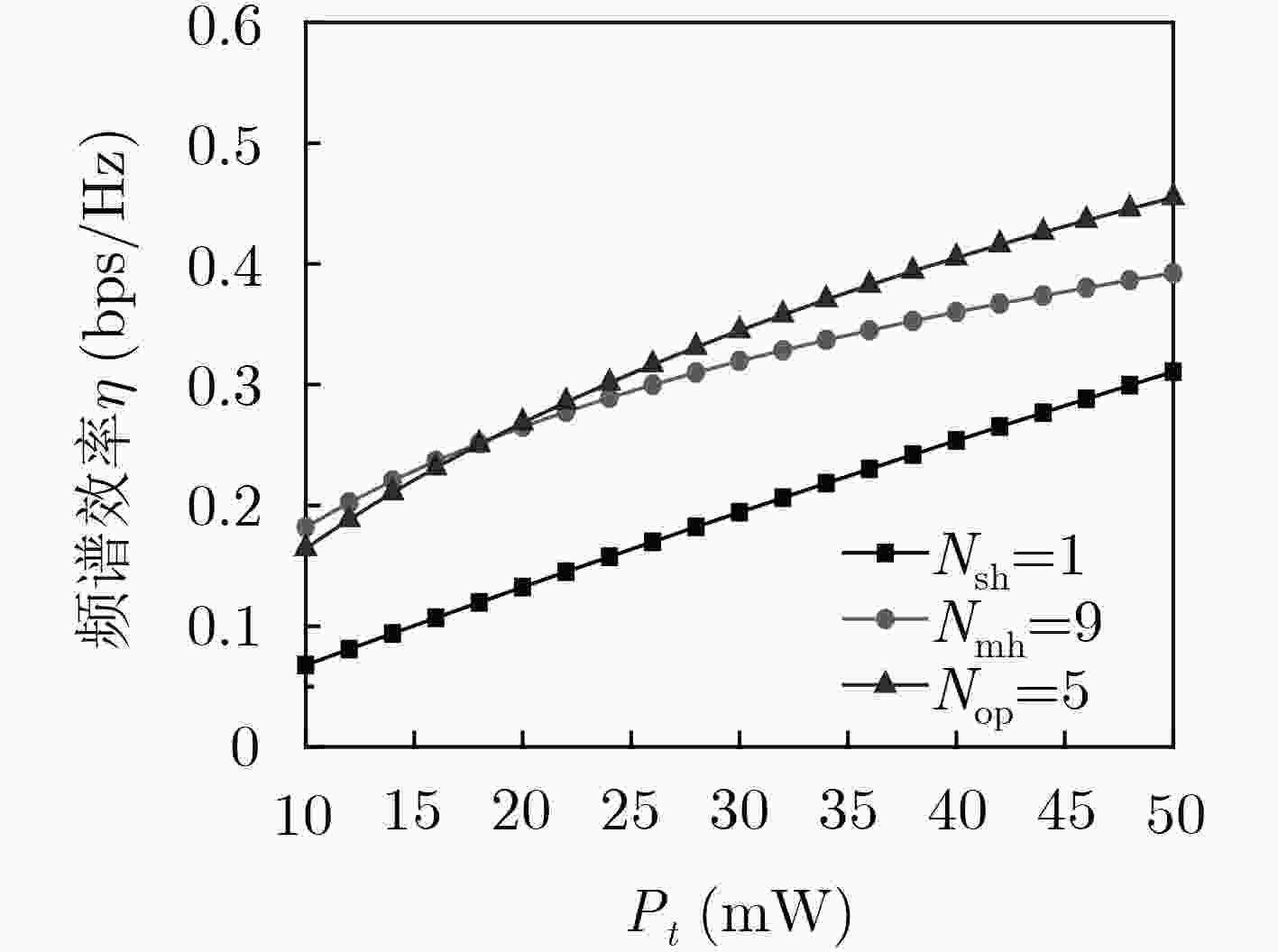


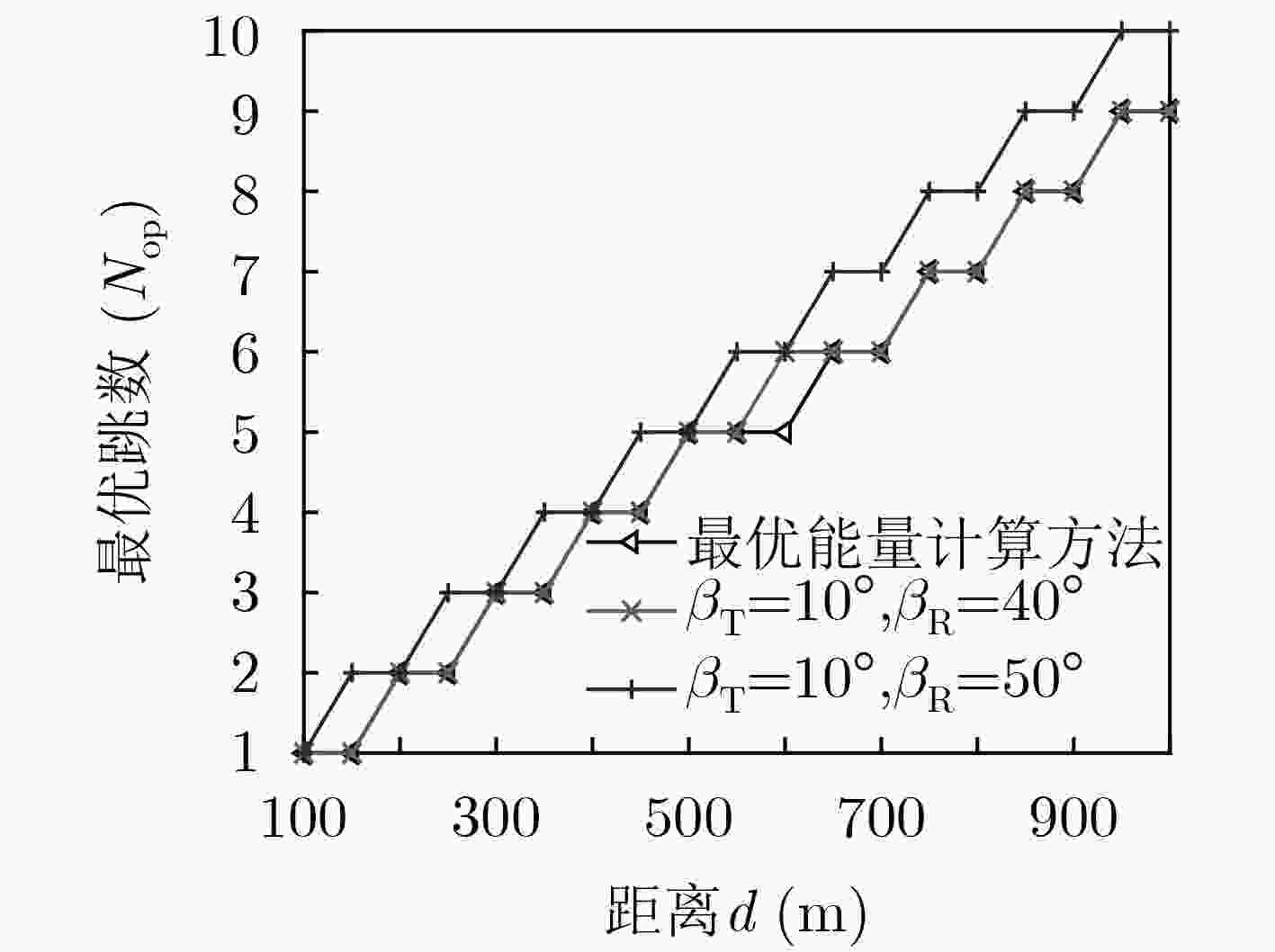
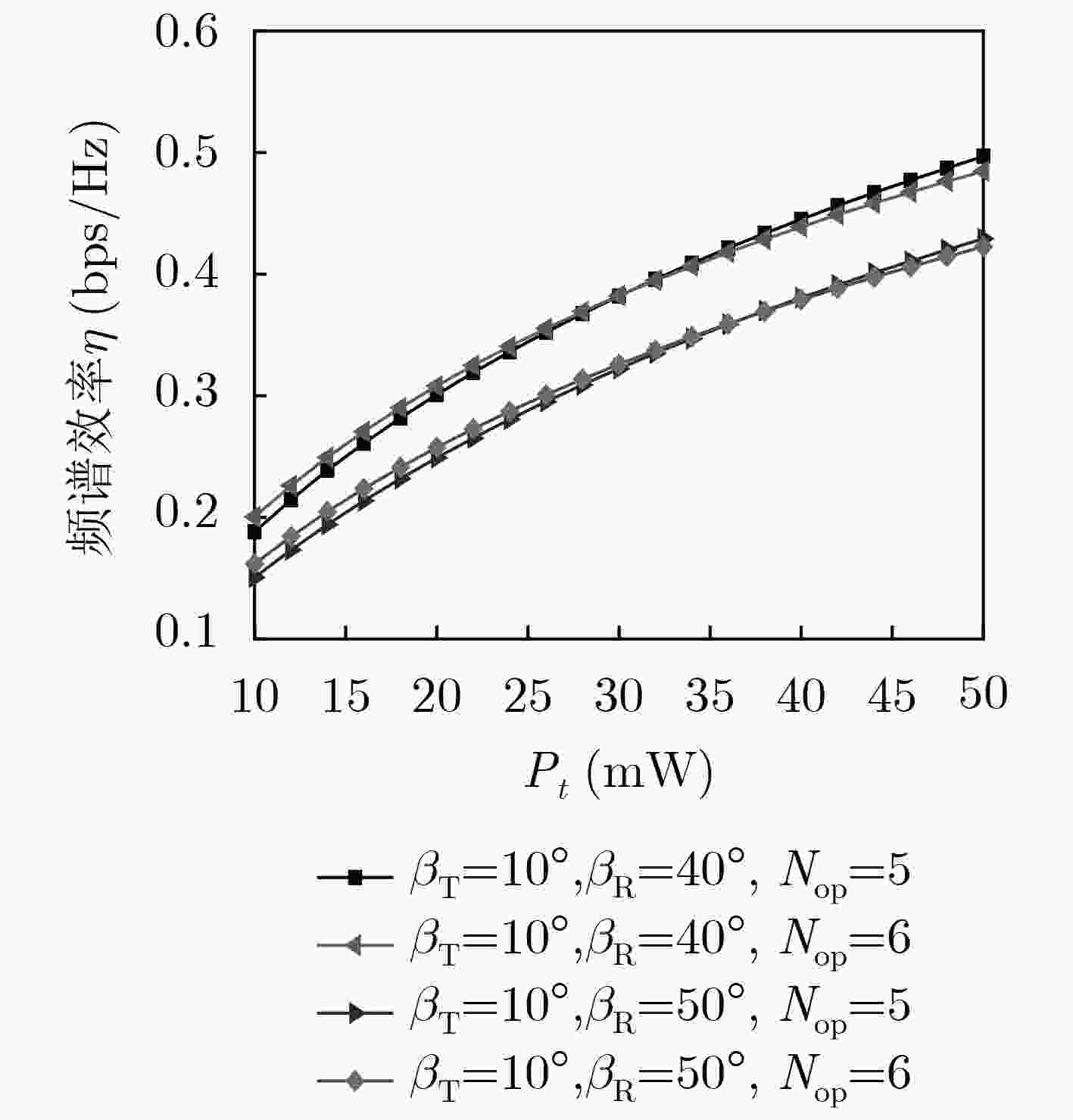




 下载:
下载:
